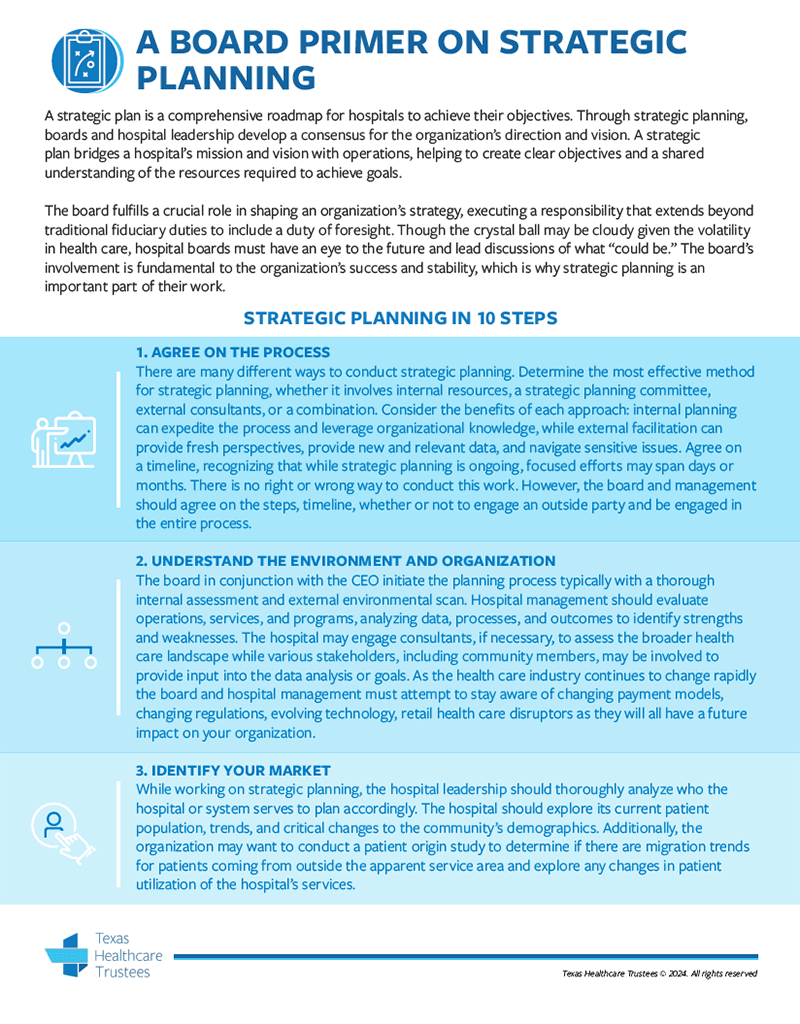The board fulfills a crucial role in shaping an organization’s strategy, executing a responsibility that extends beyond traditional fiduciary duties to include a duty of foresight. Though the crystal ball may be cloudy given the volatility in health care, hospital boards must have an eye to the future and lead discussions of what “could be.” The board’s involvement is fundamental to the organization’s success and stability, which is why strategic planning is an important part of their work.
THT Resources

On-Demand Webinars
Coming Soon!
Trustee Whitepapers

A Board Primer on Strategic Planning
A strategic plan is a comprehensive roadmap for hospitals to achieve their objectives. Through strategic planning, boards and hospital leadership develop a consensus for the organization’s direction and vision. A strategic plan bridges a hospital’s mission and vision with operations, helping to create clear objectives and a shared understanding of the resources required to achieve goals.

CEO Succession Planning
The volatility in health care makes it critically important for organizations to have a strong and relevant succession plan in place to provide stability to the organization. According to the American Hospital Association’s 2022 National Health Care Governance Survey, nearly one-third of U.S. hospitals do not have or are unsure if they have a succession plan in place.

Patient Attraction and Retention Growth Strategies
Best Practices for Data Utilization, Measurement, and Growth Strategy Development
The mission of many health systems around the Country is to ensure patients receive timely and informed care. Being able to accomplish that mission effectively is challenging due to current healthcare dynamics in the Country. Health systems continue to live in a predominantly fee-for-volume world while transitioning towards a fee-for-value environment; this produces a polarizing effect on patient growth strategies. Fee-for-volume focuses on attracting and pushing more patients through the system. Fee-for-value is looking to manage the care of a specific population in a more cost-effective and quality manner.

